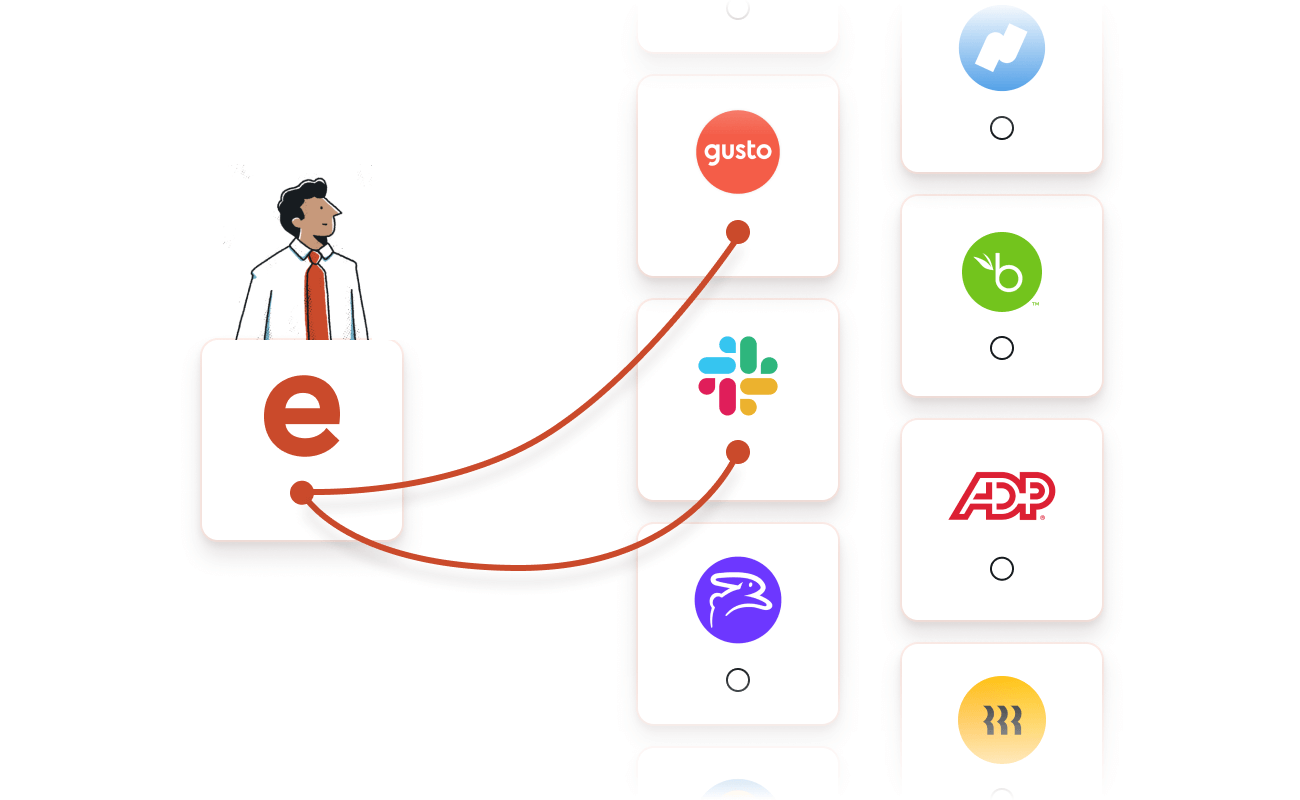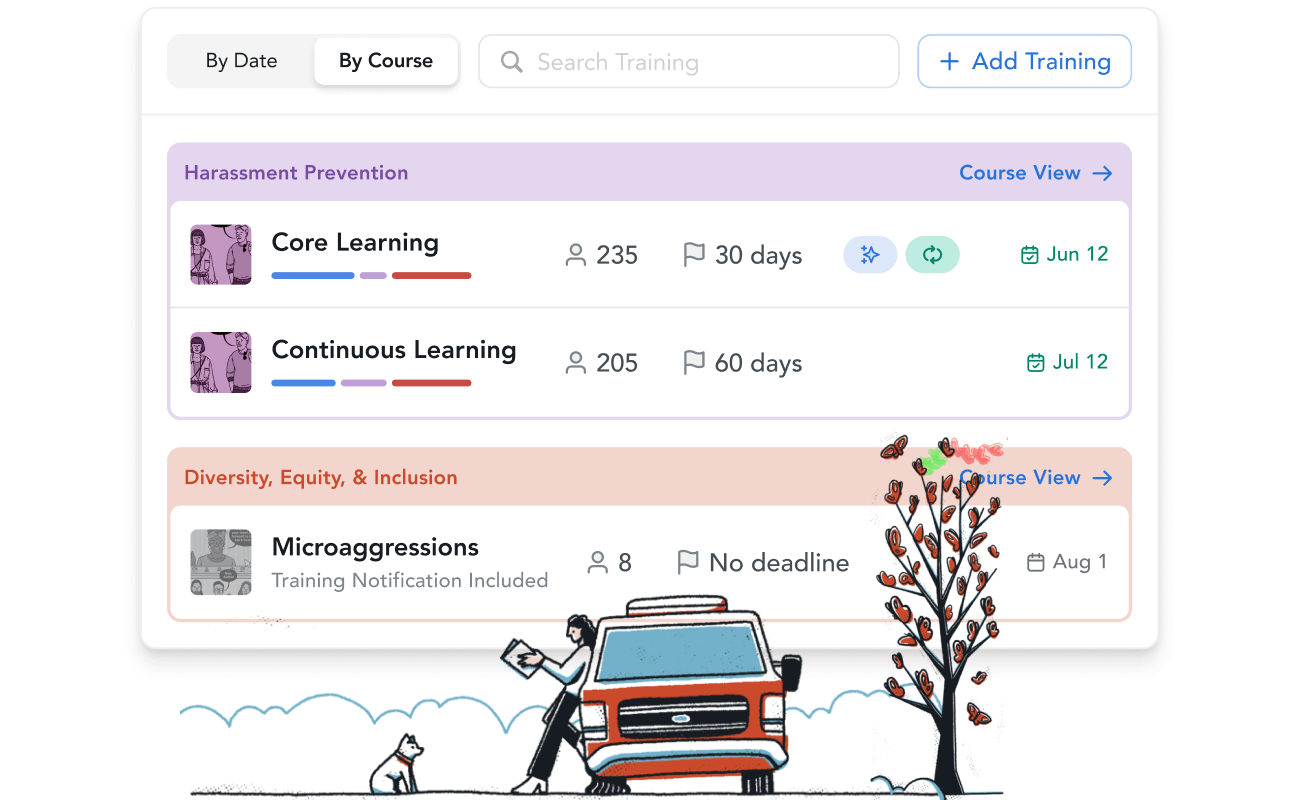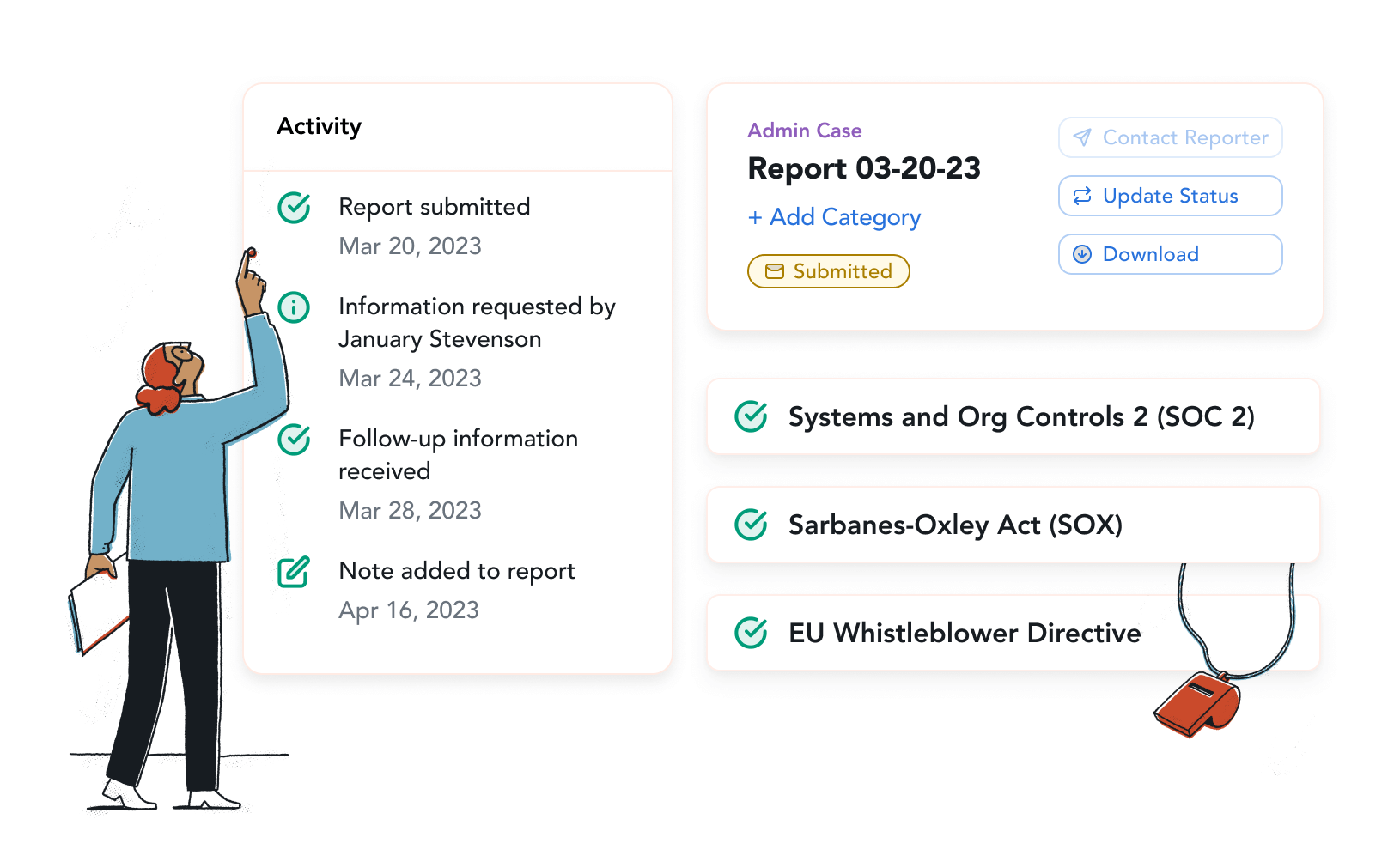Bystander Intervention Training
- 60 minutes
- 1 training module
- Included with Harassment Prevention course
- Designed to meet Chicago Ordinance 2022-665
- Customize training content
- Additional languages available
- Meets accessibility standards
- Auto-save training, mobile-friendly
- Deliver on Ethena or your LMS (SCORM)
Bystander Intervention Training: Frequently Asked Questions (FAQs)
What is the bystander effect?
The bystander effect is a psychological phenomenon where individuals are less likely to help someone in need when others are present. The more people who witness an incident, the more likely it is that each person assumes someone else will step in — resulting in inaction. This diffusion of responsibility can lead to serious consequences, especially in workplace settings where harassment or misconduct might go unchallenged. Bystander intervention training is designed to counteract this effect by giving employees the tools and confidence to recognize when something’s wrong and take appropriate action, even if no one else is speaking up.
What are the 4 Ds of bystander intervention?
The 4 Ds of bystander intervention — Direct, Distract, Delegate, and Delay — offer a simple framework for safely stepping in when you witness harmful behavior.
- Direct means addressing the situation head-on, like telling someone their comment is inappropriate.
- Distract involves interrupting the behavior indirectly, such as changing the subject or creating a diversion.
- Delegate is about getting help from someone else, like a manager or HR.
- Delay means checking in with the person affected after the fact to offer support. These options give employees multiple ways to take action, depending on what feels safe and appropriate in the moment.
How often should employees be trained on bystander intervention?
According to Ordinance 2022-665, all employees in Chicago (including supervisors and managers) must receive at least one hour of bystander intervention training each year.
What is Chicago Ordinance 2022-665?
Effective July 1, 2022, Chicago Ordinance 2022-665 mandates that all employers with employees working in Chicago provide annual bystander intervention training. This requirement is in addition to the existing sexual harassment prevention training obligations. Specifically, all employees must receive at least one hour of bystander intervention training each year, while supervisors and managers are required to complete two hours of sexual harassment prevention training, plus the additional one hour of bystander training annually.
What are the benefits of bystander intervention training?
Bystander intervention training empowers employees to recognize problematic behavior and take safe, constructive action, leading to a safer and more respectful workplace. It helps build a culture of accountability by reinforcing that everyone — not just HR or leadership — has a role in upholding workplace standards.
When employees see their peers stepping in, they’re more likely to trust the system and feel safe reporting issues themselves. This kind of early intervention also reduces legal and reputational risk by addressing misconduct before it escalates. Importantly, it can help disrupt patterns of harassment or discrimination, especially in environments where marginalized voices may not always feel empowered to speak up. In short: it’s not just about spotting what’s wrong — but rather knowing how to respond.
The right content on the right platform

Flexible integrations and training delivery
Deliver training exactly where you want with hundreds of integrations.
- Host Ethena training on our LMS or yours
- HRIS integrations for seamless employee management
- Email, Slack and ZoomChat training notifications

Easy and accurate reporting tools
Our analytics dashboards track training completion and provide in-depth reports.
- Slice metrics by department, location or role
- Export reports for regulators or third parties
- Dive deeper with custom analytics

Enhanced hotline and case management suite
Give your team the tools to navigate tricky situations at work.
- Encourage employees to speak up with misconduct reporting
- Track and respond to concerns with case management
- Meet whistleblower hotline requirements (SOX, SOC II, EU Whistleblower Directive)











